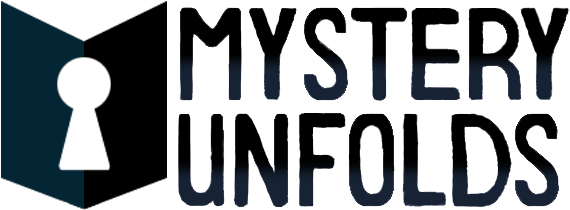The Developmental Phases of a Puzzle Card
It is quite a journey to take a Mystery Unfolds puzzle card from ideation to prototype to beta testing, and finally to an end product. These several iterative layers ensure that all misinterpretations and ambiguity are controlled for, so the player may be led through an enjoyable experience.
…and we make it look pretty.
Phase #1 - Ideation
Every puzzle card begins with the pairing of a puzzle mechanic and a theme. These generally come from our pre-existing list of themes that we’ve been wanting to try and our ongoing knowledge base of puzzle mechanics that we’ve been building out over the years. Or even more often, this pairing is made through seemingly divine inspiration whilst doing dishes.
A basic puzzle is sketched and once we’re happy, thus begins the more difficult part - finding a second puzzle that fits the theme, that can intertwine with the first puzzle. This step involves several brainstorming sessions to overcome this roadblock. Often a puzzle will get stuck at this level for weeks or months. This introduction of an additional puzzle is one that may then be repeated multiple times, depending on the intended difficulty level of the final puzzle.
Parallel to all the puzzle mechanics being squared away, three or four layouts are storyboarded. Because a puzzle card more often contains a scene, often with a lot of detail, we need to figure out if all the content of the scene can be viewed closely enough to show the relevant level of detail while maintaining the scene’s perspective.
A basic working puzzle card is scratched together with a lot of pencil, eraser, diligence, and foul language.
In a ceremony of mandatory fun, cards are gifted to our guinea pigs valued family members and the puzzle gets its first major dose of feedback. Sometimes the design needs to change entirely. Changes are made and the card is then regifted to another distant family member or friend. This process repeats many times over until a card and puzzle is 80% finalised.
Phase #2 - Prototype
By this stage; the card, artwork, and puzzles are fairly concrete. Although, they have only been exposed to a small subset of people. These are also people who are comfortable with the idea of a puzzle card and our style of puzzles. The next stage then is about sharing this prototype card with a more diverse range of people.
Using as many local Facebook communities as we can post into, our own internal mailing list, and anyone else we can find along the way, we send out a limited number of free cards to those willing to complete a feedback survey at the end. Over several weeks, we mail cards, conduct surveys, make small changes, send updated cards etc. Once all these iterations are complete, we make all the final changes the card is considered 95% done.
Phase #3 - Beta
Now that the card is almost where we want it to be, we put together imagery, descriptions, and specifications (like difficulty level) for the card so that it can be listed on the Mystery Unfolds website. By this stage, we are confident in the quality of the puzzle itself and the internal artwork, but this is when we get to see if anyone will pay money for it.
We run a limited print of 50 cards, and then monitor to see how well they sell. While in this phase, cards for sale on our website are listed as “BETA”. The only noticeable difference between a Beta card and a Complete card is the colour and weight of the paper used on the card and inserts.
While we sell those 50, we finalise any artwork imperfections or inconsistencies that have come to light in the past weeks, and we move to the final stage.
Phase #4 - Complete
At this final phase, the card is printed in bulk using our printer up the road and also made available for wholesale. The people rejoice.
